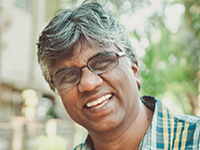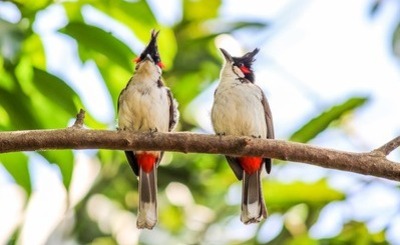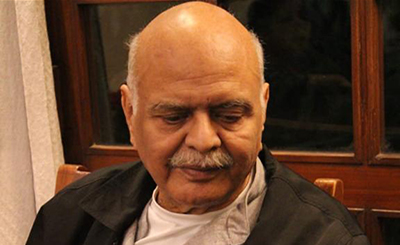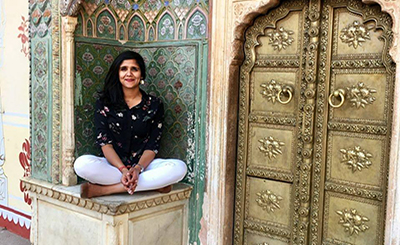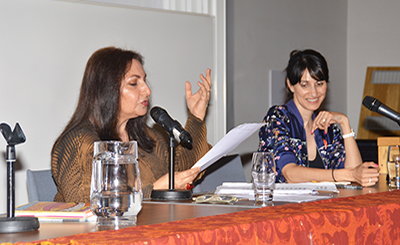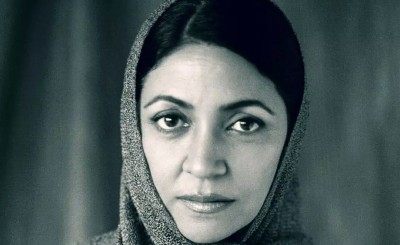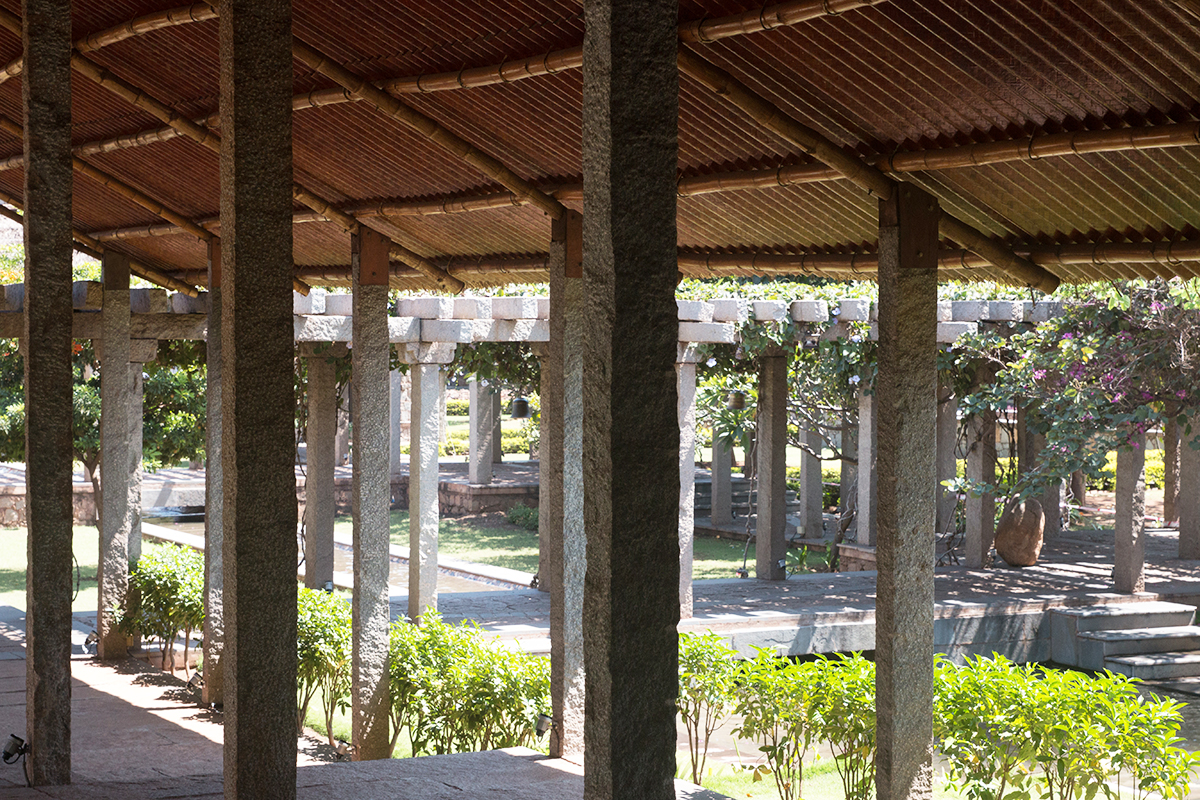
At Kaladham in Vijayanagar, Karnataka, the second edition of The Spaces Between Words: The Unfestival, a 10-day residency for writers, curated by Sathya Saran, was held early this year. Photo: Vishakha Jinda/JSW
A cricketer-author returns from a writer’s residency in Vidyanagar township in Karnataka, touched, inspired and filled with the urge to do something different and better — fearlessly
Spaces spreading outward to the horizon. Time sneaking out into eternity. Somewhere, sometime, I am hoping to find that inspiration. One that triggers an honest thought that could move one other human as it does me.
One thought worthy of the inspiration that surrounds me.
There is no lack of inspiration — there is beauty all around, great human endeavour, nature, history. So much that it overwhelms me, and I wonder where do I even begin? What is that one thing that will resonate perfectly, that will capture this experience? Should I even wait for that perfect experience — or should I seek perfection in what I experience?
I scanned through what touched me so far. What remained with me.
The orderliness, design and maintenance of the Vidyanagar township in Karnataka, touched me. Well-kept lawns, pathways, roads. I wonder what inspires such immaculate routine. Why are the gardeners working with such focus even at 5 in the evening as if they were creating a work of art? Why is the sweeper clearing the roads with a smile on his face at 7 in the morning as if it gives him great joy to do that? What drives them? Why are they so mindful of, and grateful to, work? Can I work like that at all if I choose to do?
Why is the OP Jindal museum designed so unobtrusively? What was the idea behind that design? I read about O.P. Jindal’s life and I am amazed at what he created in one lifetime. I can go on with my claims of being creative, but creation is not just abstract thoughts; one has to execute those thoughts and to really create. Can I pick my best ideas and execute them, consistently, one by one, deliberately, until they become real? Until they touch others?
I wonder at the compassionate design of the architect Gerard da Cunha, 64, who designed the township without flattening it with bulldozers and excavators. How he allowed nature to be in its place and worked his way around it, a snip here, a tuck there. Homes blend into open spaces, gardens, terraces — all showing an interconnectedness that holds the space together as one — people, nature, life. What gentleness, what economy!
I sigh when I see the vast, green, manicured open spaces, with no restrictions. How come there are no “keep off the grass, no, no, don’t don’t” signs that cause an instant separation between the creators and the users? What maturity, what trust! I do not see anyone misusing the freedom — people behave responsibly when you treat them like responsible people. If only parents and teachers could be like this with less “dont’s,” children would grow up more responsibly.
I look at the use of granite, of stone. The care taken to consciously submit to the land and its history. To make people secure, to tell them we have come to be part of you. We will merge with you. This acceptance that we are part of a greater whole, that we can submit to it, bodes well for someone like me whose main job is to reject, reject, reject all ideas of blending in, until I do not know if they have rejected me or I have rejected them. I know now, after years of carrying that strain, that it is easier to be part of the whole, to flow. How much can I blend, how much can I be one? And paradoxically I find that when I give in, I stand out, with my own unique identity. Not separately but uniquely. In our desire to stand out we destroy it all — and ourselves along with. That realisation is not wasted on me.
I see the silver bull, the half pot. The water bodies, the park with its exercise equipment and the lady with the burqa who uses it as her own personal gym. I am glad it has allowed her that space, to be herself. I wonder if I could be like that and let people be themselves around me.
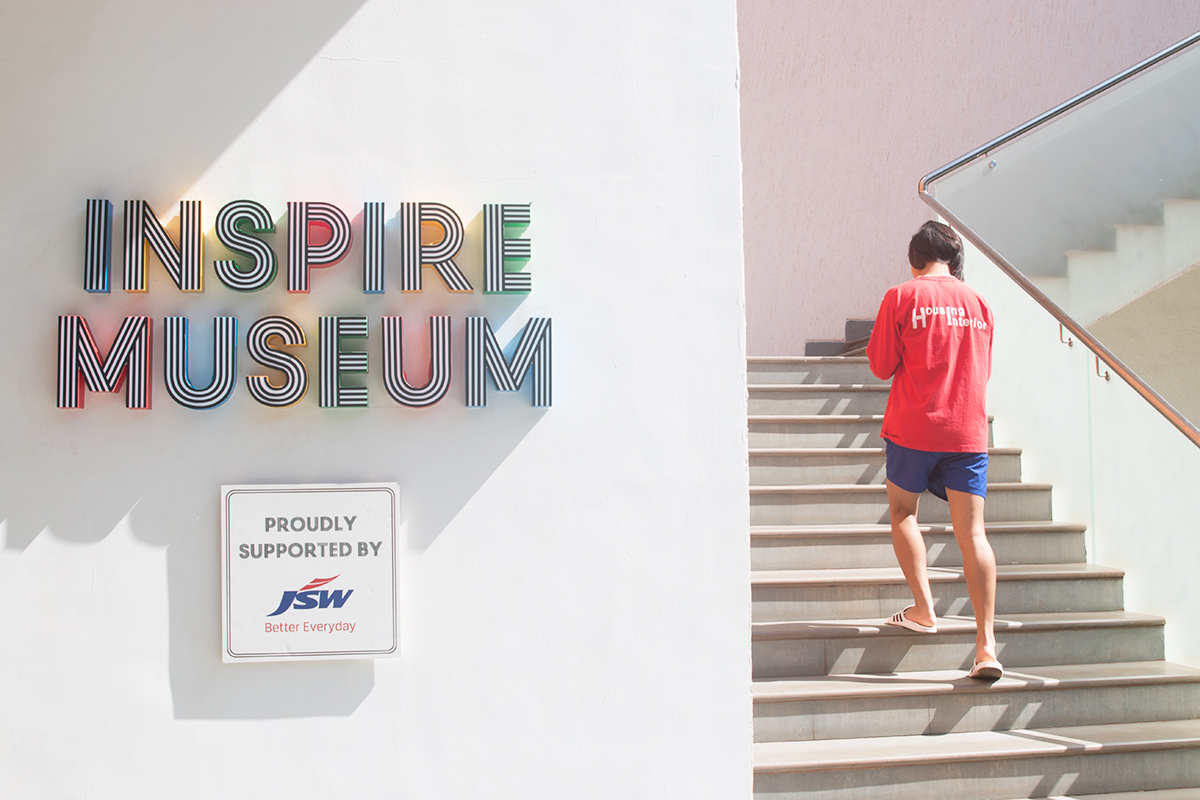
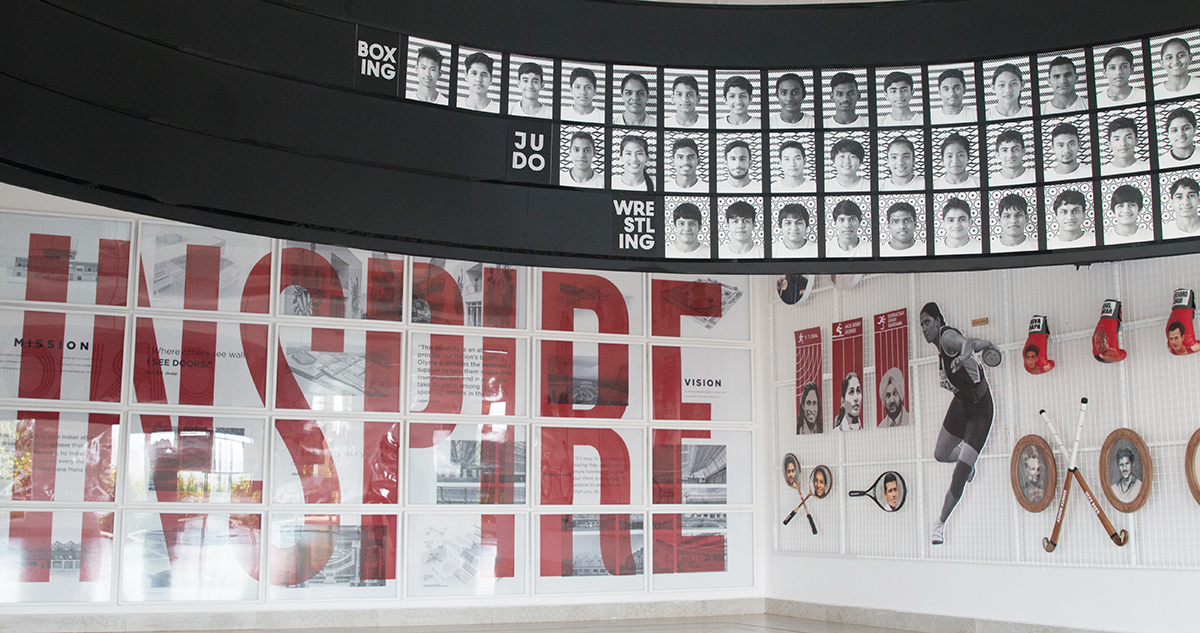
The audacity of the idea behind the Inspire Institute of Sports (IIS) shakes me up enough to want to meet the coaches, the athletes, the executives. What is this idea of producing Olympic champions — something that a large country with all its resources and organised effort could not achieve? The vision, the scale, the care — it all indicates that it might not be such a distant, impossible dream to have Olympic gold medalists teeming up the podiums from India, to have two or three digit tallies on the Olympic table by 2024 or 2028. I am impressed with the commitment of the IIS coaches who have signed up for six years to prepare Indian champions. Can I be as audacious in my vision? As organised and patient in my execution? As committed as the coaches?
The visit to Tamanna and the boy who came forward to shake hands with such affection and delight, something he seems to possess unconditionally for all people, including those like me who carry copious amounts of judgment and bias. Meeting us as if we were long-lost friends or family. If I had a hundredth of his affection for life, for people in my life, I would have done them and myself a huge favour. I hope to meet this young boy again and hopefully take away a part of his enthusiasm and love. Or the 32-year-old child-woman who came and did a namaste or the energetic 20-year-old boy who alternately did a namaste and a salute and left me in a state of inadequacy. Why is he so pleased to see me? Do I deserve so much respect? And why is he so happy? Who am I to you my dears that you shower me with such affection?
Shankar, who drove me to Hospet, came to Vidyanagar 15 years ago and lives alone while his family lives in Shahjahanpur in UP, going home twice a year, saving up money to marry his sisters off and now has little for himself and his family. He has 300 members of his family and friends working here in Vidyanagar. Bahadur from Nepal who unobtrusively cleans the room at Hampi House. Ganesh from Bengal with the wide smile, who has been here now for over 10 years. Srinivas, the cricket coach from Bengaluru, who is nurturing talent in faraway Vijayanagar by starting the Vidyanagar Cricket Club in 2004 and now creating opportunities for young talent like Subham Kumar, Ashok Reddy and Thippe Swamy. Geeta Dahiya, best cadet from the state of Haryana, who received a medal from the former president Pratibha Patil for her expertise with the 0.22 rifle, who is living away from her home in Chandigarh, going home only when her brother from the US comes to visit, worrying about her father and brother and mother who have had surgeries last year. Rajsekhar, always smiling, always there, adding his bit to enliven the mood, working here for the last 15 years while his brothers are in his hometown close by, one a political leader and another a farmer. The boys at the “Convertor” who serve with a smile, the pleasant-faced young man who collects money at the bar, the boys at Kaladham — Srinivas the guide, the pleasant young man who helped us lock and unlock the Board room, the boys who served tea and banana cake with a warm smile.
The scale and vision of Hampi, the Shiva bhakts at Sivakoti, the coconut seller at the elephant stables, the helpful waiter at the “The Mango Tree” who added his bit to my order and made the meal that much better and made me feel very special. The guide who took us along Hampi and played in the ruins as a child. The quiet photographer who came with us for the Hampi trip and told me about his young family while we walked from the Vittala temple to the car park, building a home for himself by balancing a few stones one on top of another, just as the locals believe.
What more do I need to inspire me?
More from The Byword
Comments
*Comments will be moderated



